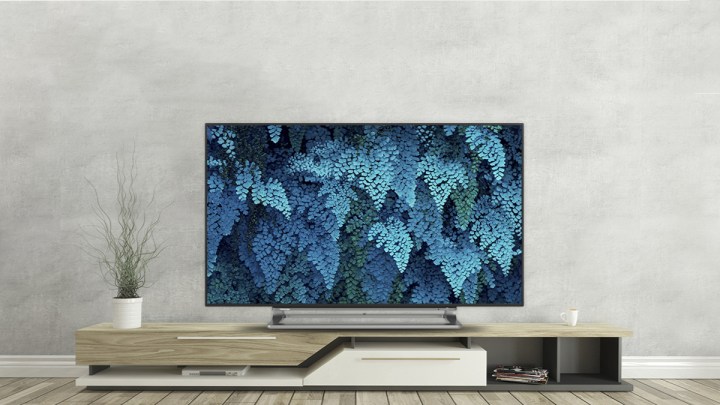Buying a TV is one of life’s big purchases. Kind of like buying a car, you want to make sure the one you get is perfect for your needs and budget and has a reputable brand name behind it — you don’t want to buy yourself a lemon. You’ve probably already figured out some of the basics like size, resolution, and maybe whether you like smart TV operating systems like Roku TV or Google TV. But what are the best TV brands out there? Are the big players like Samsung, Sony, and LG worth the premium prices, or are value brands like TCL and Hisense just as good? What features and technologies do they foster? We’re here to help answer these questions.
And if, when you’re done, you’re ready to narrow down your search, check out our roundups of the best TVs on the market, the best TVs under $500, or the best TVs under $1,000. If you’ve dug even deeper and have an OS preference, we’ve got lists of the best Google TVs and the best Roku TVs, too.
The best TV brands at a glance
| Brand | Category | Calling cards | Operating systems |
| Samsung | Heavyweight | QLED, QD-OLED | Tizen |
| LG | Heavyweight | OLED | webOS |
| Sony | Heavyweight | Cognitive Processor XR chip | Google TV, Android TV |
| TCL | Contender | Value | Google TV, Android, TV, Roku TV |
| Hisense | Contender | Variety | Google TV, Android, TV, Roku TV, Fire TV, Vidaa TV, XClass TV |
| Vizio | Contender | Quantum | SmartCast |
Note: Televisions chosen for this list are representative of makes and models available in the U.S. market. Further, TVs included in this guide were chosen primarily for their picture performance, with other considerations such as operating system or audio performance as secondary considerations.
Samsung
South Korea’s Samsung is the de facto market leader in the world television space, and took the top spot again last year, leading competitors like LG and Sony by a wide margin in terms of overall sales. That’s partly a result of the company’s size (Samsung ranks 18th on the Fortune 500), but mostly it’s because Samsung makes great TVs with a focus on accessibility.
Operating system: Tizen
Tizen is Samsung’s own Linux-based smart TV OS that places all your apps in a row along the bottom of the Smart Hub (read: home screen). It’s got all the popular streaming apps as part of a 2,000-plus app library, and it has a neat feature that activates when you select an app, showing you popular sub-categories (like Netflix shows or Spotify playlists) for that app. There’s also a Tizen Gaming Hub which supports Xbox, and GeForce Now for streaming games.
Perhaps most impressive is how Tizen works with the Samsung app family, including SmartThings, Smart Connect, and Smart View. You can use those to mirror content from your phone — even iPhones — to your TV or send TV playback directly to your phone (only on Samsung phones). If you’ve got compatible smart home devices, you also can use the TV as a control hub.
Also, Samsung’s newer models — QD-OLED, QLED, and otherwise — offer some cool features like importing app logins from your phone to save time, and the Samsung One Connect Box, built to simplify messy cable nests behind TVs (and to enable cleaner wall-mounting).
Calling cards: QLED, QD-OLED, and Neo QLED
Samsung has stayed away from producing OLED displays like those of LG. So, instead of striking a deal to use LG’s panels, Samsung branded its own LCD tech “QLED.” For a detailed breakdown, check out our QLED TV versus OLED TV comparison, but the general gist is this: QLED uses quantum dots to enhance performance by producing a purer, full-spectrum white light than LEDs are capable of on their own.
Best for bright rooms
In practice, QLED televisions are brighter (better for bright rooms) than less-expensive LCD TVs, and unlike OLED, can be more affordably built into large displays (100 inches and beyond).
Last year also saw Samsung announce its expected QD-OLED TVs, which use an advanced blue light source that acts as a hybrid between QLED and OLED. We’ve started seeing these TVs show up in the wild now, including the stunning Sony A95K QD-OLED, and the Samsung S95B OLED, if you are looking for an OLED-like upgrade from your current set.
For 2023, Samsung’s forging ahead with their QD-OLED displays, announcing at CES 2023 their latest S95C lineup they’re branding simply as “OLED.” They’re available in 55- and 75-inch sizes, as well as a massive 77-inch model that we recently got our hands on for review. Samsung’s microLED TVs are also coming down in size and price and its primary money maker, its mini-LED Neo QLED lineup, has gotten a redesign too, and we’ve already had some time with the new stable.
LG

Another South Korean company, LG may not be as massive as Samsung, but thanks to its OLED TV display technology, it’s had minimal competition when it comes to top-of-the-line picture performance with its unrivaled contrast and black levels, but new screen tech like QD-OLED is making headway.
Operating system: WebOS
WebOS is LG’s easy-to-use user interface and, like Tizen, Roku, and Google TV, is the hub from which you access your apps, TV settings, and other advanced features. The most recent version of webOS for 2023 TVs has been redesigned to offer more customization and shortcuts so users can get to what they want to watch faster.
LG’s Magic Motion Remote is also one of the better-designed remotes, with support for voice commands for both Amazon Alexa and Google Assistant, along with a Magic Explorer feature that lets viewers get additional info about the show or movie they’re watching, from what actors appear in the series or film to notable trivia.
Calling card: OLED
OLED — Organic Light Emitting Diode — is the premier display technology today. OLED TV panels are capable of reaching black levels never before seen, with better contrast across the board, and because the individual pixels themselves light up, OLED televisions boast quicker response times (and less input lag) than other types of displays, and the picture integrity is stunning at any viewing distance.
Last year we saw some stunning OLED Evo TVs hit the market from LG, including our top pick for the best TV, the 65-inch LG G2 Evo Gallery OLED, and the well-reviewed LG C2 Evo OLED. In 2023, however, not only did LG announce some pretty interesting new TVS with the 97-inch LG Signature OLED M that transmits audio and video wirelessly from what they call a Zero Connect box, and the transparent OLED T television, but had to also throw down its answer to Samsung’s QD-OLED, with its latest OLEDs, the evo G3 Gallery Edition with its bolder and brighter microlens (MLA) array, but the latest lineup of its popular C3 OLED TVs, too.
We’ve run down the pricing and availability details for all of LG’s 2023 models for you as well.
Sony
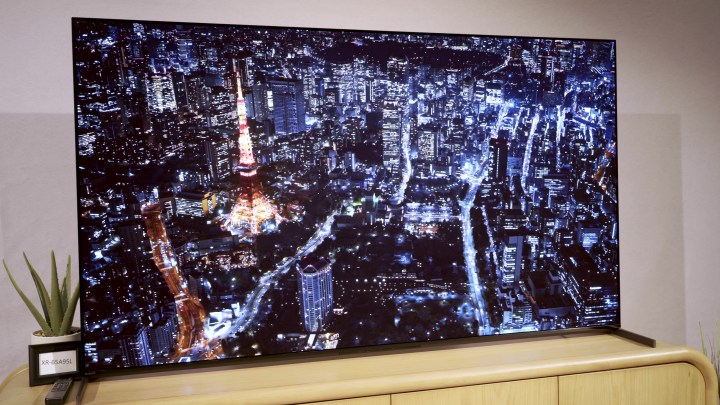
It’s easy to get lost in the Samsung versus LG TV wars and not think as much about Sony, but you’d be making a big mistake. While its TVs tend to be a bit more expensive, they’ve got some of the best processing capabilities and accurate color reproduction of them all, especially if you care about things like motion processing and gaming.
Operating system: Google TV
Google TV — versions of which run on many other devices, like the Amazon Fire TV family — isn’t quite as slick as WebOS, but it’s arguably more powerful. Unlike WebOS and Tizen, the Google TV home screen is laden with apps and suggestions, and you can scroll down for even more. Sony’s 2021 catalog was the first generation of sets to switch over to Google TV, an overhaul of the Android TV OS that features a faster, more intuitive user interface, complete with recommended and sponsored web content.
Google TV also has built-in support for Google Assistant (via a microphone in the remote or in your phone) and Chromecast, for both video and audio. Plus, as with Tizen, Google Smart Lock can automatically sync logins from your mobile device to your TV. You also have the ability to create separate profiles with Google TV for each person in your home.
Calling card: XR chip, mini-LED, and now QD-OLED
Sony is one of a handful of companies offering OLED televisions (the list has recently expanded to include Panasonic, Philips, Hisense, and Vizio) thanks to a deal with LG Display allowing Sony to build TVs using LG OLED panels, which can be found in Sony’s excellent A90K OLED and 2023’a all-new A80L OLED — the latter of which, it’s worth noting, will not use LG’s new MLA tech.
Due to Sony’s Cognitive Processor XR chip, Sony’s Bravia flagship TVs offer greater contrast, improved sound, low input lag, and faster web performance than we’ve ever seen. Many of Sony’s TVs also offer VRR (Variable Refresh Rate) for gaming, particularly with the Sony-owned PlayStation 5.
In 2022, Sony also announced a push into mini-LED technology. It’s a more affordable version of MicroLED tech where the LEDs are a bit larger, but still provide some of the same benefits, including better-localized dimming, brightness, and contrast. Sony’s processor is key to this as it is designed with backlight algorithms to take the most advantage of smaller LEDs. For 2023 Sony’s mini-LED has gotten even better with an all-new tier, the brighter X95L 4K sets that should rival Samsung’s new QN95B QLED models, and the new X93L.
But the most interesting battleground is with QD-OLED. Last year Sony caused a stir by releasing its first QD-OLED TV, the stunning Bravia A95K, which is built using Samsung Display’s QD-OLED panel. Sony clearly sees a future in QD-OLED as it marries the best properties of OLED’s lush, perfect blacks and QLED’s brightness abilities. For 2023, Sony has doubled down with its next generation of QD-OLED, the A95L (that replaces the A95K), which uses Samsung’s brighter, more efficient QD-OLED panel. The A95L should be a contender for TV of the year.
TCL

TCL was barely a blip on the radars of seasoned LED TV reviewers half a decade ago. Today, it’s the fastest-growing brand out there and has been offering us some of the best mini-LED QLED TVs on the market at preposterously low prices.
Operating system: Roku, Google TV
TCL isn’t the only company making Roku TVs — Sharp, Philips, and Hisense do the same, among other manufacturers — but it has been the most successful so far. It remains to be seen what will happen this year when Roku begins making and selling its own OLED TVs. The Roku TV platform’s vast selection (4000+) of apps and its snappy cross-app search function is second to none and the OS is super easy to use. But if Roku isn’t your jam, TCL expanded into Google TV territory in 2021 and hasn’t looked back. There were even some rumors that the company would be ditching Roku, but they assured us that this isn’t the case.
Calling cards: Value, mini-LED QLED
If you’re on a tight budget, but you still want some buttery mini-LED QLED goodness in your TV with stunning picture quality that can actually go toe-to-toe with some of the higher-end Samsung and LG TVs, TCL is the way to go. Up to CES 2023 earlier this year, TCL’s long-running, and excellent, 6-Series, 5-Series, and 4-Series TVs were its bread and butter, with its flagship 6-Series consistently wowing us, landing on several of our best TV lists.
For 2023, however, TCL is starting from scratch, ditching the numbered 1-, 3-, 4-, 5-, 8-, and 6-Series nomenclature for a much more pared-down two-bucket categorization: the high-end QLED-powered Q Series and the more affordable S Series. The big guns for 2023 will be TCL’s flagship QM8 Series, a mini-LED QLED lineup that will come in 65-, 75-, 85-, and, (gulp) 95-inch varietals. The non-mini-LED Q7 Series range is the next step down and will likely be more affordable, and there will also be an additional Q6 Series tier as well. We’ll update this post with more information as we get it.
Hisense
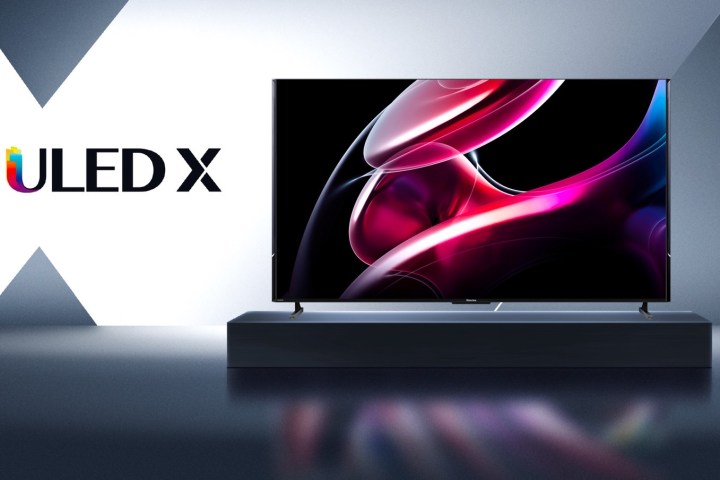
Chinese manufacturer Hisense has been steadily making moves in the TV market over the years, licensing Sharp’s brand name (and buying its North American factory outright in 2015), buying Toshiba’s business in 2017, and making TVs under all three names for the U.S. market. Hisense had a rocky start but found a rhythm in making value-conscious Quantum 4K panels. In fact, their quality has improved so much that one of the latest versions, the 65-inch Hisense U8H, is on our list of the best TVs for its amazingly bright image and class-leading black levels.
Operating systems: Roku, Google TV, Android TV, Fire TV, Vidaa TV, XClass TV
Hisense is unique in that it doesn’t have a singular operating system tied to its line of televisions. Some of its TVs still use Android TV, and Hisense also sells models with Google TV, Roku TV, and Fire TV, for Alexa lovers. It also offers TVs that use an OS called Vidaa TV, a slick-looking software that’s good for local TV, and XClass TV, which is simple and bare-bones.
Calling card: Variety, mini-LED QLED
With all of those OS choices, buyers can pick the smart platform they like, with plenty of options for budget-friendly purchases. And like TCL, Hisense uses mini-LED QLED (Hisense calls it ULED) technology for its best TVs, including the above-mentioned 2022 U8H Google TV which has excellent contrast and vivid color, that comes close to many of the best models from Samsung, Sony, and LG. 2023 will see the U8H elevate into the new U8K models, which are even brighter, listing 1,500 nits, and have a new anti-glare screen and a built-in 2.1.2 Dolby Atmos audio system among other improvements. Hisense’s step-down models, the U7H and U6H series TVs, are also beautiful and beautifully priced and are both getting an upgrade this year making the leap from standard LED backlighting to mini-LED with the U7K and U6K series.
Lastly, new for 2023, is a new flagship Hisense, the 85-inch ULED X, a mini-LED QLED monster with more than 5,000 local dimming zones and a peak brightness of 2,500 nits. Dolby Vision, Wi-Fi 6e, NextGen TV, and AMD’s Freesync Premium Pro are some of the other features that are helping push Hisense forward this year, too. Like TCL and Vizio, Hisense’s TVs are priced to afford, making you sometimes wonder why you’d even pay more for the big players.
Vizio
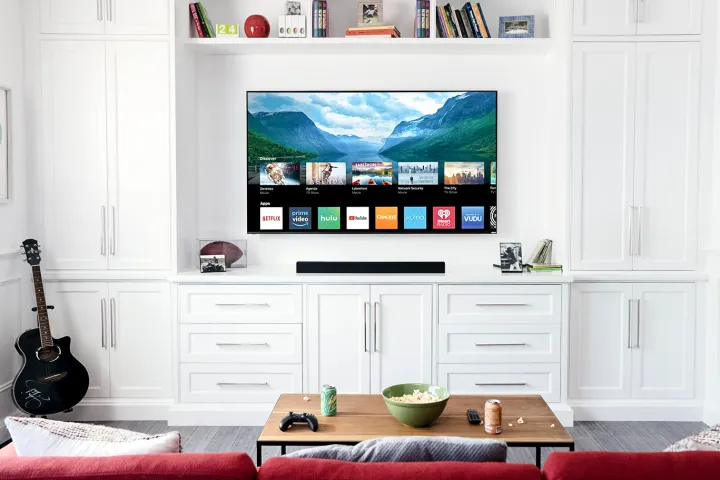
Vizio was once the undisputed champion when it came to awesome picture quality at a reasonable price. And while brands like TCL and Hisense have since challenged the Mighty V’s position at the top of Budget TV Mountain, this isn’t to say that Vizio isn’t still a name to be reckoned with.
Operating system: SmartCast
Before 2017, all of Vizio’s Smart TVs ran a system that required users to download an application on their smartphone or tablet, which would be used to cast any content to the screen. In a nutshell, they were designed for mirroring. SmartCast updated that system by automatically curating a wide selection of apps without the need to download anything. That includes major streamers from Disney+ to Netflix, plenty of individual channel apps, and a wide variety of niche apps. It’s particularly easy to use in a field where smart TV platforms aren’t always the most user-friendly.
Vizio also now offers a WatchFree+ service, which allows users to watch free content on SmartCast from partners like Disney, Lionsgate, Sony, MGM, and others.
Calling card: Affordability, Quantum color
As with Samsung, Vizio is big on quantum-dot-powered panels. This is especially evident for the brand’s 2022 models, especially when it comes to the MQX and P-Series Quantum X series. And on top of quantum-enhanced colors and contrast, while you won’t find mini-LED tech on these 2022 models, the sheer number of traditional LED local dimming zones that are in place make for a totally arresting image packed with brightness, color detail, lifelike contrast, and minimal light blooming.
Plus, gamers will be happy with Vizio’s compatibility with AMD’s FreeSync technology, which enables smoother graphics when used with compatible gaming consoles and PCs. It has also an M-Series TV specifically designed for gaming, with a 240 fps frame rate and built-in Dolby Vision Auto Gaming, among other features. Vizio’s plans for 2023 are not yet known.
Legacy TV brands
Remember these? These are the TV brands many of us grew up with, but they’re no longer leading the pack.
Panasonic
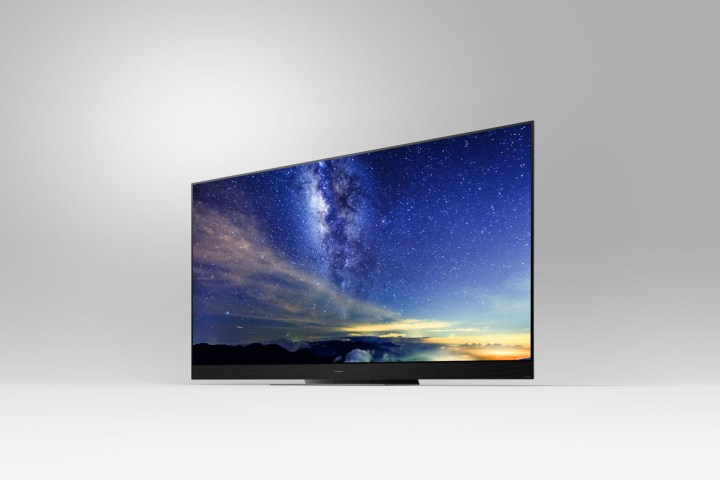
With over half a century of skin in the game, it’s weird to consider Panasonic an up-and-comer. It’s seen better days, particularly when plasma TVs were the hottest thing going and Panasonic was the leader of that bunch. But, boy, have times changed. With the fall of plasma, the company has packed up its American dream and taken it back to Europe and Asia, where scores of consumers are enjoying some of the best OLED sets available. American customers, meanwhile, will have a much harder time finding any models locally.
What happened?
Panasonic isn’t known for its disruptive technologies, but it does produce a number of reliable UHD OLED models. The big problem is that its TV sets just aren’t available in North America any longer, which makes the brand very hard to recommend compared to similar, affordable TVs from Hisense or TCL that are readily available. At CES 2022, Panasonic showcased the LZ2000 OLED TV and it went on sale in the UK, but it never made it across the pond to the U.S. Then again at CES 2023, they announced the bigger and brighter MZ2000 OLED, which features LG Display’s new MLA technology found it its 2023 G3 TVs mentioned above. We’re not expecting these to make it here either. Panasonic isn’t really worth considering unless you’re on another continent.
Toshiba
For most of the 20th century, Toshiba was the preeminent name in Japanese television manufacturing, having produced the first Japanese transistor TV in 1959.
What happened?
Hisense spent more than $110 million to buy 95% of Toshiba’s TV business in 2017. The real nail in the coffin came in 2015, though, when (after years of flagging sales and a de-prioritization of the sector) Toshiba gave up on making TVs for the U.S. market. Reportedly, the decision came after years of trying to compete with an expanding global market by lowering prices and costs without sacrificing quality.
The decision to invest in Canon’s SED technology in the mid-aughts turned out poorly as well. For a company that once reigned as one of the leaders in CRT (cathode-ray tube) and rear-projection TV manufacturing, it’s a shame, but Toshiba is still chugging along just fine, making other appliances and electronic control systems. Its TV line is only notable as an Amazon partner, which means they offer built-in Fire TV and Alexa voice assistant compatibility.
RCA

For all the more seasoned folks reading, RCA was once the most respected bastion in American television development, having deployed the first-ever TV test pattern in 1939 (!) and pioneered the first color TV standard, NTSC (so named after the National Television System Committee) in 1953.
What happened?
By the mid-1980s, RCA had been lapped by Japanese manufacturers and was no longer the powerhouse many remembered. A massive $6 billion-plus deal in 1985 saw the entire company sold to General Electric, then, in 1988, GE turned around and sold the rights to GE and RCA-branded televisions to French company Thomson. Thomson later sold the GE rights to TCL in 2004 and the RCA rights to Korea’s ON Corporation, which currently makes RCA-branded TVs.
Magnavox
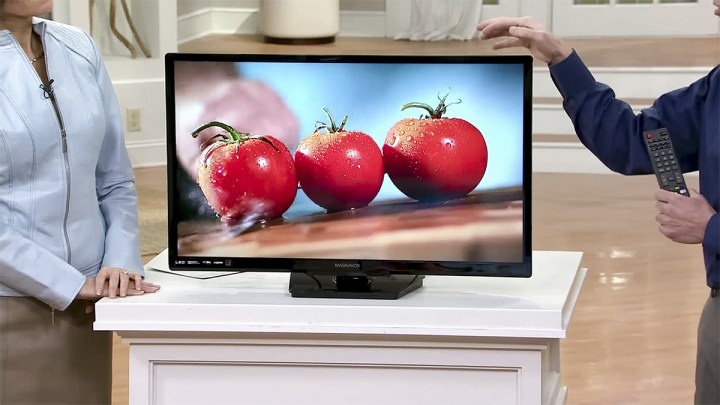
Magnavox may never have been the most dominant name in the American TV game, but it was a prominent player for some years following the technology’s proliferation.
What happened?
In 1974, Philips acquired Magnavox’s consumer electronics division, later introducing and selling televisions under the “Philips Magnavox” brand name to try and bolster sales in the U.S. Eventually, Philips sold those rights to Funai, which now makes TVs under both the Philips and Magnavox brands. Magnavox (the company) is still a subsidiary of Philips.
JVC
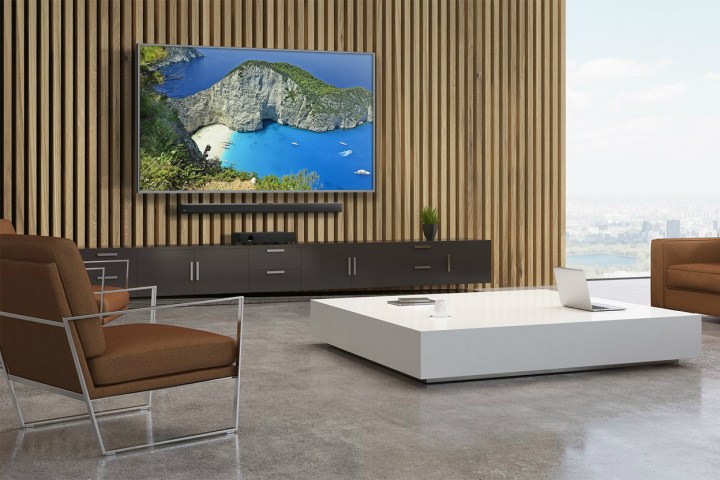
JVC used to be part of the Panasonic Corp. and started manufacturing TVs in 1953. For decades, JVC was one of the most well-respected TV brands on the market. Few companies sold more CRT sets over the back half of the 20th century.
What happened?
Around the turn of the millennium, JVC started seeing dwindling sales in its TV division. In 2008, the company merged with Kenwood and closed many TV manufacturing plants in the next few years. It also had to phase out TV production to increase the manufacturing of other products.
In 2011, JVC Kenwood ceased television production altogether and licensed the brand name to Taiwanese manufacturer AmTRAN for the North American market. When that license expired, the next deal went to China’s Shenzhen MTC, which currently makes TVs under the JVC brand in the U.S. and elsewhere. JVC still has a stellar reputation for projectors, which it still produces and sells.

Editors' Recommendations
- This 77-inch LG OLED TV just got a massive $800 price cut
- Save $1,000 on this massive LG 77-inch OLED TV at Best Buy
- This LG 75-inch 4K TV is a steal at $580 at Best Buy — save $220
- This LG soundbar with wireless subwoofer bundle is $150 off
- Buy a new TV at Best Buy and stream sports for free



